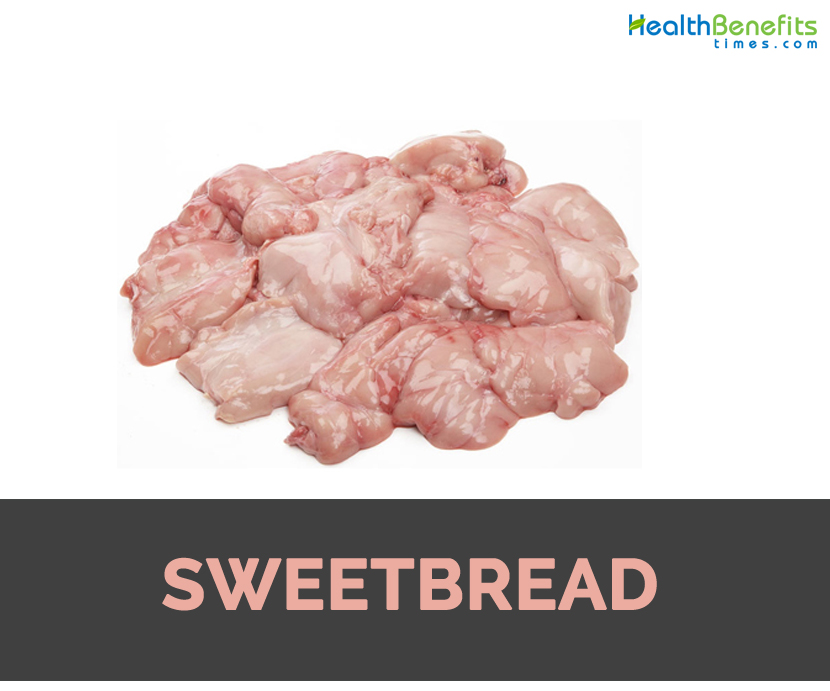Culinary uses
- Sweetbread is versatile and could be prepared in various ways such as poached, sautéed, fried, grilled, braised and roasted.
- Sweetbreads are paired with terrines, pates, cold appetizers, salads, stews and sausages.
- It is used to stuffing or in pates.
- In Latin American cuisines, it is grilled.
- In Turkish cuisine, it is served in bread.
How to make sweetbread?
Ingredients:
- Chicken stock – 4 cups
- Egg, beaten – 1
- Sweetbreads – 500 g
- Lard, dripping or oil, heated – 1 cm
- Breadcrumbs – ¼ cup
Sweetbread fritters
- Salt – 1 pinch
- Flour – 120 g
- Egg, beaten – 1
- Milk – 150 ml
- Sweetbreads, poached, cooled and grated or chopped – 500 g
- Oil, or butter, heated – 1 cm
Directions:
To prepare Crumbed sweetbreads:
- Firstly, soak the sweetbreads. In a colander, rinse them under water then place it in a bowl and cover it with cold water.
- Let it remain in the fridge overnight (change water several times). It is ready to use when water runs clear.
- In a pot put the stock and boil. Put sweetbreads in a hot broth and poach for about 15 minutes.
- When it is ready, put them into colander, drain it and let it cool down.
- Dip sweetbreads in a beaten egg and then to breadcrumbs. Then fry in hot lard or oil and serve it immediately.
To prepare Sweetbread fritters:
- In the bowl, add flour and salt. Then slowly add beaten egg and milk. Mix it to make a smooth batter.
- Stir in a grated/ chopped sweetbreads.
- Heat butter or oil, then fry fritters.
Health Benefits of Sweetbreads
- High Vitamin C
Vitamin C could also be obtained from organ meats and plant foods. Serving 100 grams offers 57% of reference daily intake for Vitamin C. Sweetbreads provide similar amount of vitamin to clementine. Vitamin C is a crucial nutrient having antioxidant and immune enhancing properties.
- Protein source
Sweetbread offers more than 12 grams of protein per 100 grams. It also offers all essential amino acids in adequate amounts that make it a complete protein source.
- Loaded with Vitamin B
Sweetbreads have all B vitamins and are a great source of Vitamin B12, which offers about 35% of Recommended Daily Intake for nutrient. Vitamin B12 is required for formation of red blood cells, energy metabolism and to maintain healthy nervous system.
- Packed with minerals
Sweetbreads offer varying proportion of essential minerals. It has rich content of iron, potassium, phosphorus, zinc and selenium. Among these minerals, a sweetbread contains most phosphorus (39 of RDI) and selenium (25% of RDI) per 100 grams. Phosphorus is crucial for strong bones and healthy skeletal system. Selenium strengthens immune system and acts as antioxidant in the body that assists to protect cells against oxidative stress.
Why soaking is necessary?
Soaking helps to discard any blood or other impurities remained in sweetbreads. Extension of soaking period softens sweetbreads especially if used an acidic source.
References:
https://en.wikipedia.org/wiki/Sweetbread
https://simple.wikipedia.org/wiki/Sweetbread
https://center-of-the-plate.com/2012/08/14/all-about-sweetbreads/
https://www.bite.co.nz/recipe/7900/Sweetbread-recipes/
https://wiki.kidzsearch.com/wiki/Sweetbread
https://www.nutritionadvance.com/what-are-sweetbreads/
Comments
| Sweetbread Quick Facts | |
|---|---|
| Name: | Sweetbread |
| Taste | Meaty-but-mild and slightly creamy |
| Calories | 270 Kcal. Kcal./cup |
| Major nutrients | Copper (481.67%) Total Fat (72.34%) Vitamin B-12 (52.92%) Phosphorus (43.29%) Histidine (31.09%) |
| Name | Sweetbread |
|---|---|
| Texture | Slightly spongy |
| Taste | Meaty-but-mild and slightly creamy |
| Major Nutritions | Copper, Cu 4.335 mg (481.67%) Total Fat (lipid) 25.32 g (72.34%) Vitamin B-12 (Cobalamine) 1.27 µg (52.92%) Phosphorus, P 303 mg (43.29%) Histidine 0.383 g (31.09%) Isoleucine 0.443 g (26.50%) Tryptophan 0.111 g (25.23%) Lysine 0.843 g (25.21%) Valine 0.47 g (22.25%) Threonine 0.386 g (21.93%) |
| Calories in 3 oz (85 g) | 270 Kcal. |



